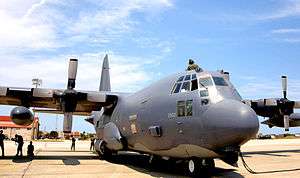102d Rescue Squadron
| 102d Rescue Squadron | |
|---|---|
|
102d Rescue Squadron - Lockheed HC-130H Hercules 88-2102. | |
| Active | 30 April 1908–Present |
| Country |
|
| Allegiance |
|
| Branch |
|
| Type | Squadron |
| Role | Combat Rescue |
| Part of | New York Air National Guard |
| Garrison/HQ | Francis S. Gabreski Air National Guard Base, Westhampton Beach, New York |
| Nickname(s) | Air National Guard's Oldest Unit |
| Patron | So that others may live |
| Engagements | Operation Iraqi Freedom, Operation Enduring Freedom |
| Insignia | |
| 102d Rescue Squadron emblem |
|
The 102d Rescue Squadron (102 RQS) is a unit of the New York Air National Guard 106th Rescue Wing stationed at Francis S. Gabreski Air National Guard Base, Westhampton Beach, New York. The 102d is equipped with the HC-130 Hercules transport.
The squadron is a descendant organization of the World War I 102d Aero Squadron, established on 23 August 1917. Its origins begin however, on 30 April 1908 as the 1st Aero Company, a pre-World War I independent unit of the New York National Guard. After the war, the unit was reformed on 7 November 1921 as the 102d Observation Squadron, and is one of the 29 original National Guard Observation Squadrons of the United States Army National Guard formed before World War II.
The 102d Rescue Squadron is the oldest unit of the Air National Guard, with over a century of service to the state of New York and the United States.[1]
History
Origins
On April 30, 1908,[2] 1st Lt. Frank P. Lahm reported to New York City along with 1st Lt. Thomas Selfridge and civilian balloonist Leo Stevens to familiarize 25 members of the First Company, Signal Corps, a unit of the 71st New York Infantry, in the use of hydrogen-filled kite balloons. The company was organized to provide the New York National Guard with an "aeronautical corps" for balloon observation, commanded by Major Oscar Erlandean.[3] By 1910 it had acquired a home-made aircraft using private funds and transported it to summer maneuvers, but it was not flown. The aircraft was destroyed in a crash but an airplane owned by Glenn Curtiss was flown during the 1912 summer maneuvers in Connecticut by Private Beckworth "Becky" Havens, a salesman for Curtiss. This group sometimes referred to itself as the "1st Aero Company" but was never authorized or officially recognized by either the State of New York nor the U.S. Army.[4]
1st Aero Company

The 102d traces its official lineage back to the 1st Aero Company, authorized by the governor of New York in October 1915 and organized in November by 1st Lieutenant Raynal C. Bolling as an unnumbered detachment of the First Battalion Signal Corps, New York National Guard, for aviation training at Mineola on Long Island.[5] The 1st Aero Company was provisionally recognized by the federal government in June 1916 and called to active duty between July 13, 1916, and November 15, 1916, to continue training with the purpose of joining the 1st Aero Squadron, a Regular Army unit deployed to Mexico with the Punitive Expedition. The 1st Aero Company, however, never left Long Island and was disbanded on May 23, 1917, shortly after the United States entered World War I, when the Army decided not to use national guard aviation units in the war effort. Its history and lineage were bestowed on the 102nd Observation Squadron.[4]
102d Aero Squadron
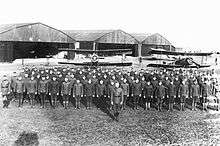
The Air Service 102d Aero Squadron was organized at Kelly Field, Texas, on 23 August 1917. The men engaged in construction activities, drilling, digging ditches, making roads, and putting up tents for new recruits arriving at the field. When athletics were started at the camp, the 102d organized a baseball team which was runners-up for the championship at the field. Once basic indoctrination training was completed, the 102d was ordered for overseas duty, being ordered to report to the Aviation Concentration Center, Garden City, Long Island. It arrived at Mineola Field on 3 November 1917 where it was prepared and equipped for overseas duty. On 23 November, the squadron, along with the 103d, 104th, and 105th Aero Squadrons were ordered to report to the Port of Entry, Hoboken, New Jersey for boarding on the former White Star Liner RMS Baltic for transport. After an uneventful Atlantic crossing, it arrived at Liverpool, England on 8 December 1917.[6]
After a few days at a Rest Camp near Winchester, England, the squadron moved to Le Havre, France, and then traveled by train to the Replacement Concentration Center, AEF, St. Maixent Replacement Barracks, France, arriving on 18 January 1918. At St. Maixent, the 102d was used as a station squadron, as well as being trained in hiking, fatigue duty and guard duty. On 1 March, the squadron was ordered to report to the 2d Air Instructional Center (2d AIC), Tours Aerodrome, in central France. The men were assigned to nearly every department at the field, in the machine shops working on aircraft to the transportation department where the men drove trucks and all manner of vehicles. The squadron remained at 2d AIC until after the Armistice with Germany in November 1918, then returned to the United States in April 1918. Arrived at Mitchel Field, New York, where the squadron members were demobilized and returned to civilian life.[6][7]
New York National Guard
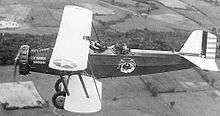
Constituted in 1920 as the 102nd Squadron (Observation), the squadron was assigned to the 27th Division, allotted to the state of New York, as its divisional aviation. The unit was organized in November 1921 from the "Observation Squadron, New York National Guard, which had been organized on 22 March 1921 at Hempstead, New York, with personnel from K Company, 14th Infantry, New York National Guard. It was reorganized and federally recognized in November 1922 at Miller Field on Staten Island and redesignated as the 102nd Observation Squadron in January 1923.[8]
During the inter-war years, the 102nd Observation Squadron flew a variety of aircraft but continued to serve as the aerial eyes for the Commander of the 27th Infantry Division, New York National Guard. One of America’s leading aces of the First World War, George A. Vaughan (9.5 victories) became one of the 102d’ Observation Squadron’s first commanders. He eventually became the 27th Division’s Air Officer.[9] In 1929, in a reorganization of the Army, it was relieved from permanent assignment to the 27th Division but remained attached to it for command and control purposes. In October 1933 it was assigned to an observation group for mobilization in case of war.[8]
Its operations were primarily air transportation and aircraft repair and maintenance. However, squadron elements were called up periodically by the state of New York to perform emergency duties that included reconnaissance for the Treasury Department of vessels conducting illegal-liquor trade off the New York-New Jersey coast in the 1920s; support of flood relief efforts in Vermont 6–16 November 1927; aid to civil authorities during a prison break from the maximum security Auburn Prison, 11–12 December 1930; and flood relief efforts in upstate New York 11–13 July 1935.[8]
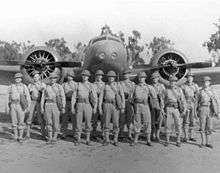
The squadron conducted summer training annually at Pine Camp, New York, during the years 1921-40 where it generally supported the training of the 52nd Field Artillery Brigade, and performed other training at Miller Field and at Mitchel Field on Long Island.[8]
In 1936 it was consolidated with the demobilized 102nd Aero Squadron.[8]
World War II
In October 1940 the 102nd OS was inducted into active federal service at Miller Field as part of the United States Army Air Corps, relieved from assignment to its parent group, and assigned directly to the VII Corps. The Army relocated it to Fort McClellan, Alabama, shortly after its call up, then assigned it a year later to the 71st Observation Group. Initially it was assigned to antisubmarine patrols over the Gulf of Mexico. After the Attack on Pearl Harbor, the squadron was moved to Southern California, flying antisubmarine patrols over the Los Angeles coast until November 1942.
Returned to Third Air Force control in late 1943, becoming a reconnaissance training unit for Army ground forces at Fort Hood, Texas and Fort Polk, Louisiana. Moved to the Desert Training Center in southern California in early 1944, continuing supplying reconnaissance training for Army units engaged in desert warfare training until April 1944 when the DTC was closed and the squadron was disbanded.
New York Air National Guard
As part of the formation of the Air National Guard after World War II, the unit was reconstituted on 21 June 1945. The wartime 102d Tactical Reconnaissance Squadron was re-designated as the 102d Bombardment Squadron (Light), and was allotted to the New York Air National Guard, on 24 May 1946. It was organized at Floyd Bennett Field, Brooklyn, New York, and was extended federal recognition 21 March 1947 and activated by the National Guard Bureau. The 102d Bombardment Squadron was bestowed the lineage, history, honors, and colors of the 102d Tactical Reconnaissance Squadron and all of its predecessor units. The squadron was equipped with B-26 Invader light bombers and was assigned to the NY ANG 106th Bombardment Group operationally gained by Tactical Air Command.
The mission of the 102d Bomb Squadron was proficiency in tactical bombing. Parts were no problem and many of the maintenance personnel were World War II veterans so readiness was quite high and the planes were often much better maintained than their USAF counterparts. In some ways, the postwar Air National Guard was almost like a flying country club and a pilot could often show up at the field, check out an aircraft and go flying. However, the unit also had regular military exercises that kept up proficiency and in gunnery and bombing contests they would often score at least as well or better than active-duty USAF units, given the fact that most ANG pilots were World War II combat veterans.
Korean War activation

With the surprise invasion of South Korea on 25 June 1950, and the regular military's complete lack of readiness, most of the Air National Guard was federalized placed on active duty on 1 February 1951. The 102d's B-26 light attack bombers were sent to Fifth Air Force in Japan for use in the Korean War, and the 106th Bomb Group was federalized and assigned to Strategic Air Command. On 28 March 1951, the Group was deployed less equipment to March Air Force Base, California. The 102d was re-equipped with Boeing B-29 Superfortresses and given the mission to train reservist crewmen to back-fill rotating B-29 combat crews serving in Korea. While the air guardsmen were undergoing training they were paid on the lesser reserve pay scale. The personnel and equipment at March were re-designated as the 320th Bombardment Wing in December 1952 and the 106th BG was returned to New York state control.
Cold War
With its return to New York state control in 1953, the 106th was again equipped with B-26 Invaders, the aircraft being returned from combat duty in Korea. The 102d trained in proficiency with the attack bomber until the removal of the B-26 from bombing duties in 1956 as neared the end of their service lives.
The 106th was transferred from Tactical Air Command to Air Defense Command (ADC) and assumed an air defense mission over Long Island and New York City, entering the Jet Age with the limited all-weather F-94B Starfire interceptor. With the Starfire, the 102d began standing end of runway air defense alert, ready to launch interceptors if ADC Ground Intercept Radar picked up an unidentified target. The squadron stood air defense alert from one hour before sunrise until one hour after sunset every day, 365 days a year. In 1957, ADC upgraded the 102d Fighter-Interceptor Squadron to the all-weather F-86D Sabre Interceptor. With the receipt of the F-86D, the alert mission was extended to 24 hours a day/7 days a week/365 days a year.
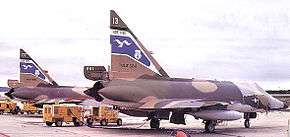
In 1956, Lt. Col. Norma Parsons made military and National Guard history when she became the first woman member of the National Guard, the first woman member of the Air National Guard, and the first woman to be commissioned in the Air National Guard.[10]
In 1958, the 106th FIG was reassigned to Military Air Transport Service (MATS), trading in its Sabre interceptors for 4-engined C-97 Stratofreighter transports, being allocated to the MATS Eastern Transport Air Force (EASTAF). The 106th worked closely with the 1st Aeromedical Evacuation Transport Group at Kelly Air Force Base, San Antonio, Texas, a regular Air Force unit.
Initially equipped with specialized MC-119J Flying Boxcars configured for transport of wounded and injured, the 102d Aeromedical Transport Squadron airlifted critically injured and sick personnel until 1964. With air transportation recognized as a critical wartime need, the 102d was re-designated the 102d Air Transport Squadron (Heavy) in January 1964 and equipped with C-97 Stratofreighter heavy transports.. With the C-97s, the 102d augmented MATS airlift capability world-wide in support of the Air Force’s needs in Europe. It also flew scheduled MATS transport missions to Europe, Africa the Caribbean and South America.
With the acquisition of KC-97 Stratotankers from Strategic Air Command, the 104th was transferred back to Tactical Air Command in September 1969 and the 106th became an air refueling group. Its mission was to provide aireal refueling to tactical fighters. With the KC-97 being a variant of the C-97 Stratofreighter the conversion of the unit from transports to refueling aircraft was easily accomplished, the squadron receiving the KC-97Ls with addition of jet engine pods mounted to the outboard wings. It rotated personnel and aircraft to West Germany as part of Operation Creek Party, a continuous rotational mission flying from Rhein Main Air Base, West Germany, providing air refueling to United States Air Forces in Europe (USAFE) tactical aircraft. The success of this operation, which would continue until 1972, demonstrated the ability of the Air National Guard to perform significant day-to-day missions without being mobilized.
In 1969, the Air Force closed Suffolk County Air Force Base and the NYANG relocated there. The 102d Air Refueling Squadron returned to Air Defense Command in 1972 and again became an air defense unit. The 102d was re-equipped with the F-102A Delta Dagger, which was being replaced in the active duty interceptor force by the F-106. The Mach-2 "Deuce", still a very potent interceptor, served with the 106th FIG until June 1975, when Aerospace Defense Command was reducing the USAF interceptor force as the threat of Soviet Bombers attacking the United States was deemed remote.
Rescue mission
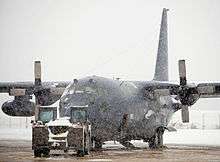
The 102d converted to an Aerospace Rescue and Recovery Squadron in 1975, flying Sikorsky HH-3E rescue helicopters and HC-130 Hercules tankers for in-flight refueling. The squadron’s base on Long Island enables it to act as the only Air Force rescue organization in the northeastern United States. It upgraded its inventory to provide a capability for long range over-water missions using the aerial refueling capabilities of the HC-130s and Sikorsky HH-60G Pave Hawk rescue helicopters.
After the midair explosion of the Space Shuttle "Challenger" in 1986, the 106th Rescue Wing was designated to provide support for every shuttle launch thereafter.
In October 1991, an HH-60 and a tanker flew to an endangered sailboat about 250 miles south of its base. The Pave Hawk and HC-130 dropped survival gear to the vessel, which was riding out the storm, and began their return to base. Both aircraft encountered severe weather conditions and the helicopter was unable to take on fuel. The HH-60 was forced to ditch in the Atlantic Ocean about 60 miles south of the base in what would later become known as "the Perfect Storm", and all but one member of the crew were saved by the crew of the United States Coast Guard cutter Tamaroa. TSGT Alden Smith, a pararescueman (PJ), lost his life fulfilling the squadron's motto That Others May Live. The mission was recounted in both a best selling book and major motion picture.
From 1991 to 2002, the 102d RQS deployed personnel and aircraft to support Operation Northern Watch in Turkey and Operation Southern Watch in Kuwait and Saudi Arabia. While supporting Operation Iraqi Freedom, the squadron made its first two combat rescues on November 2, 2003 by using a hydraulic rescue tool to extricate two injured soldiers trapped in the burning wreckage of an Army CH-47 Chinook helicopter shot down near Fallujah.

The 102d RQS received international recognition when two aircrews and PJs of the squadron successfully completed the "longest over-water rescue with a helicopter in aviation history" in December 1994, a mission in which a pair of HH-60s flew to Halifax, Nova Scotia, and then 750 miles out over the Atlantic Ocean to search for survivors of the Ukrainian cargo ship Salvador Allende. A search of the area located the last survivor, and PJ TSGT James Dougherty jumped into the ocean to effect the rescue. During the 15-hour mission, the two helicopter crews were refueled in flight 10 times by HC-130s.
The 106th Rescue Wing has assisted the state in battling the 1995 "Sunrise Wildfires" in the Hamptons, they were first on the scene after the crash of TWA Flight 800, and the recovery of the wreckage from the plane flown by John F. Kennedy, Jr., which crashed into the Atlantic Ocean in 1999. The squadron located the transponder of the wreckage of the plane underwater.
In 1998, the wing carried out the longest over-water rescue mission in an HH-60, saved one soul, made famous by the book: Pararescue, The Untold Story of a rescue and the heroes that pulled it off, written by Michael Hirsh.
On September 11, 2001, the first ANG personnel on scene at World Trade Center were those of the 106th Rescue Wing.
In 2004, Air Force Special Operations Command re-organized Air National Guard rescue wings, establishing separate squadrons for fixed-wing, helicopter and pararescue. The squadron transferred its HH-60G Pave Hawk helicopters to the 101st Rescue Squadron; its pararescue personnel to the 103d Rescue Squadron.
Lineage
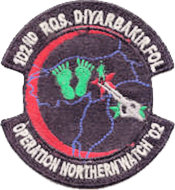

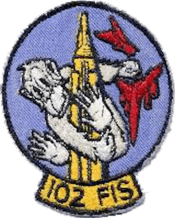

- Organized as 102d Aero Squadron on 23 Aug 1917
- Re-designated: 102d Aero Squadron (Service), on 2 March 1918
- Demobilized on 1 May 1919
- Constituted in the National Guard on 30 December 1920 as the 102d Squadron (Observation) and allotted to the state of New York
- Organized on 17 November 1921
- Inactivated on 3 September 1922
- Reorganized and federally recognized on 4 November 1922
- Re-designated as the 102d Observation Squadron on 25 January 1923
- Consolidated on 20 October 1936 with the World War I 102d Aero Squadron
- Re-designated: 102d Observation Squadron on 25 Jan 1923
- Ordered to active service on 15 Oct 1940
- Re-designated: 102d Observation Squadron (Light) on 13 Jan 1942
- Re-designated: 102d Observation Squadron on 4 Jul 1942
- Re-designated: 102d Reconnaissance Squadron (Bombardment) on 2 Apr 1943
- Re-designated: 102d Tactical Reconnaissance Squadron on 11 Aug 1943
- Disbanded on 15 Apr 1944
- Reconstituted on 21 Jun 1945.
- Re-designated: 102d Bombardment Squadron (Light) and allotted to New York ANG on 24 May 1946
- Extended federal recognition on 20 February 1947
- Federalized and ordered to active service on: 1 March 1951
- Re-designated: 102d Bombardment Squadron (Medium), 1 May 1951
- Released from active duty and returned to New York state control, 1 December 1952
- Re-designated: 102d Fighter-Interceptor Squadron, 1 July 1956
- Re-designated: 102d Aeromedical Transport Squadron, 1 July 1958
- Re-designated: 102d Air Transport Squadron (Heavy), 11 January 1964
- Re-designated: 102s Military Airlift Squadron, 8 January 1966
- Re-designated: 102d Air Refueling Squadron, 17 September 1969
- Re-designated: 102d Fighter-Interceptor Squadron, 2 December 1972
- Re-designated: 102d Aerospace Rescue & Recovery Squadron, 14 June 1975
- Re-designated: 102d Air Rescue Squadron, 1 October 1989
- Re-designated: 102d Rescue Squadron, 16 March 1992
- Components designated as: 102d Expeditionary Rescue Squadron when deployed as part of an Air and Space Expeditionary unit after June 1996.
Assignments
- Post Headquarters, Kelly Field, 23 August-3 November 1917
- Aviation Concentration Center, 3–23 November 1917
- Headquarters, Chief of Air Service, AEF, 9 December 1917 – 9 January 1918
- Attached to: Royal Flying Corps
- Replacement Concentration Center, AEF, 16 January-2 March 1918
- 2d Aviation Instruction Center, 2 March 1918-March 1919
- Aviation Concentration Center, March-1 May 1919
- New York National Guard (divisional aviation, 27th Division), 17 Nov 1921
- Second Corps Area, 16 Oct 1940
- VII Army Corps, c. Nov 1940
- II Air Support Command, 1 Sep 1941
- 71st Observation Group, 1 Oct 1941
- Attached to 69th Observation Group from Dec 1941
- 69th Observation (later Reconnaissance; Tactical Reconnaissance) Group, 29 Mar 1942
- 76th Tactical Reconnaissance Group, 5-15 Apr 1944
- New York Air National Guard, 20 February 1947
- 106th Bombardment Group, 21 March 1947
- 106th Fighter-Interceptor Group, 1 July 1956
- 106th Aeromedical Transport Group, 1 July 1959
- 106th Air Transport Group, 1 July 1960
- 106th Air Refueling Group, 1 July 1962
- 106th Fighter-Interceptor Group, 2 December 1972
- 106th Air Rescue Group, 1 October 1989
- 106th Rescue Group, 16 March 1992
- 106th Operations Group, 1 October 1995 – Present
Stations
|
|
Aircraft
|
|
See also
References
![]() This article incorporates public domain material from the Air Force Historical Research Agency website http://www.afhra.af.mil/.
This article incorporates public domain material from the Air Force Historical Research Agency website http://www.afhra.af.mil/.
- ↑ ANG Heritage: Missions, Wars and Operations, airforce.mil, retrieved 12-13-2014.
- ↑ New York Herald, May 1908
- ↑ Long Island Unit Gave Birth to “Citizen Airmen”, Eric Durr, 2008, Division of Military and naval Affairs, ny.gov, retrieved 12-13-2014
- 1 2 A Chronological History of the Air National Guard and its Antecedents, 1908 - 2007, Dr. Charles Gross, 2007, nationalguard.mil, retrieved 12-13-2014
- ↑ New York Air National Guard, First Aero Company: Official History Archived 11 February 2012 at the Wayback Machine.
- 1 2 Series "E", Volume 15, History of the 97th-101st Aero Squadrons. Gorrell's History of the American Expeditionary Forces Air Service, 1917–1919, National Archives, Washington, D.C.
- ↑ Order of Battle of the United States Land Forces in the First World War, Volume 3, Part 3, Center of Military History, United States Army, 1949 (1988 Reprint)
- 1 2 3 4 5 Clay (2011), p. 1440
- ↑ Early History of The 106th Rescue Wing
- ↑ "Archived copy". Archived from the original on 26 July 2011. Retrieved 2012-11-20.
- Maurer, Maurer. Combat Squadrons of the Air Force: World War II. Maxwell Air Force Base, Alabama: Office of Air Force History, 1982.
- Clay, Steven E. (2011), US Army Order of Battle 1919-1941. 2 The Services: Air Service, Engineers, and Special Troops 1919-1941. Fort Leavenworth, KS: Combat Studies Institute Press. ISBN 9780984190140.
- Rogers, B. (2006). United States Air Force Unit Designations Since 1978. ISBN 1-85780-197-0
- Cornett, Lloyd H. and Johnson, Mildred W., A Handbook of Aerospace Defense Organization 1946 - 1980, Office of History, Aerospace Defense Center, Peterson AFB, CO (1980).
Bibliography
- The Perfect Storm: A Story of Men Against the Sea, Sebastian Junger, 1997
- Pararescue: The Story of An Incredible Rescue and the Men that Pulled it Off, Michael Hirsh, 1998
- That Others May Live, Jack Brehm, 2000
- War Flying in France, George A. Vaughn, 1922
- Guardsmen Look Skyward, The Minute Man in Peace & War: A History of the National Guard, Jim Dan Hill, 1964
- The Millionaires Unit, Marc Wortman, 2006
- Deadly Departure: Why the Experts Failed to Prevent the TWA Flight 800 Disaster and How it Could Happen Again, Christine Negroni, 2000
External links
- GlobalSecurity.org 102nd Rescue Squadron.
